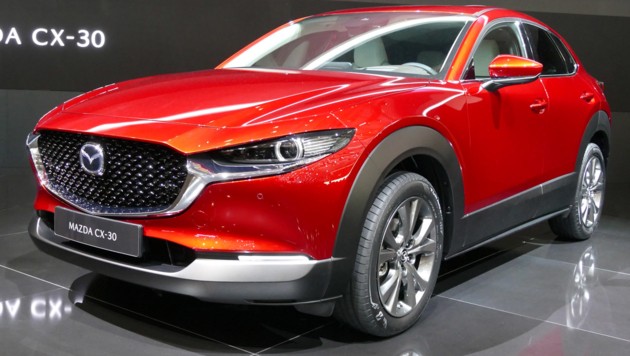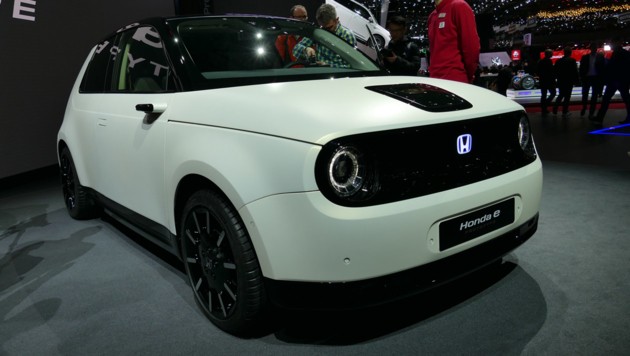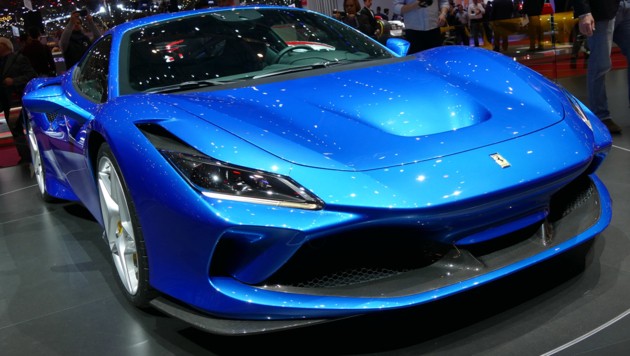Geneva remains a fixed chord in the round of European auto shows, although a number of manufacturers this year skip the showcase at Lac Leman (7 to 17 March 2019). The absence of Jaguar, Land Rover, Volvo & Co makes it possible for other, partly smaller car makers, to make a big impact. Here are eleven highlights of the 2019 issue – and a total flop that causes eye pain.
Mazda is such a brand that this year is more powerful than ever. Otherwise, always lined up in Geneva between Ford and Honda, the Japanese have now taken over the central position, which otherwise always held Volvo, just opposite Rolls-Royce and in sight to BMW and Mercedes. Yes, it goes to premium at Mazda. There they are astonishingly capable – even to present a car novelty from which not the slightest fuzzy futzel of a photo has surfaced on the internet.
Mazda CX-30

Not even the name was guessed. Nobody would have come to CX-30 either. It is practically the SUV version of the beautiful Mazda3, which comes to the dealer on March 22nd. With 4.40 meters in length he is positioned between CX-3 and CX-5, the engines he takes over from the 3 Series. Market launch for the CX-30 is in the fall – from the beginning with the compression-ignition petrol engine, which we have to wait for the time being in the Mazda3.
Skoda Kamiq

The Czechs finally bring a legitimate successor to the Yeti. The face of the Kamiq is not as likeable as that of the blessed predecessor, but with 4.24 meters in length and 1.79 meters wide, he meets almost exactly its dimensions. Only in height, he undercuts him clearly, the Kamiq succeeds under a good 1.53 meters flat laid beam. The trunk volume is 400 to 1395 liters, compared to the Yeti but the loading edge is higher and wider. Under the hood there is the choice between two gasoline engines with 115 and 150 hp, a 115-hp diesel and a 90 hp CNG drive. The Kamiq comes from the Scala, but has 36 mm more ground clearance. Optionally, there is a suspension whose dampers can be switched between comfortable and sporty.
Fiat Centoventi
The Italians surprised everyone in Geneva with their mini-car concept called Centoventi, which visually reminds of the blessed Panda 1. The 3.70-meter flea is electrically powered. Its standard range is only 100 kilometers, but at extra cost you can order four more batteries, which should then come to 500 kilometers. One of the batteries can be taken home and loaded there. The whole car is modular, it can be customized with more than 100 extra parts. Since it does not bother that only the color gray is to be offered for the body. The whole thing should be sold particularly cheap.
Honda e-Prototype It’s

not as cool as the original Urban EV study, but it’s not an electric car like many others. With hidden rear door handles, he imitates the two-door study. Instead of exterior mirrors, there are cameras. Under a flap on the front hides the charging socket, over which one can fill up to 200 kilometers range (WLTP). For fun reasons, the rear axle is driven. But given the short range you should hold back. The market launch is planned for 2020, in Europe initially 5000 units are to be sold.
Peugeot 208

A feschak as it appears in the book, the Peugeot 208 with its saber-toothed lights is the front, the rear claw marks and the fresh interior with hochgelegtem i-cockpit. The Frenchman will come with both internal combustion engines and – as e-208 – with 100 kW electric motor. A battery with 50 kWh promises 340 kilometers WLTP range, the trunk holds 270 liters.
Seat el-born

Only electrically powered Seats Studi el-born on the road, the upcoming VW ID. based on the first e-car of the Spaniard. The highlight is actually the name, because “el-born” sounds like it came from “electric born” or something, so to speak as an electric car born. In fact, El Born is a hip district in Barcelona. The look is more conservative than futuristic. The e-machine delivers 150 kW / 204 hp and accelerates the family current in 7.5 seconds to 100 km / h. After WLTP, thanks to 62 kWh battery to be 420 kilometers in it.
Mercedes CLA Shooting Brake

Daimler’s estate coupe looks just as good as it is practical. Despite flat roofline lacking in the back seat in any way at headroom, in general, more space than in the predecessor. Above all, however, wider objects can now be invited. Also outside dimensions, wheelbase and track have grown. When it comes to assistance systems, the CLA is close to the S-Class. The engines reach up to 225 hp.
Piëch Mark Zero

Toni Piëch, the son of Ferdinand Piëch and Marlene Porsche, puts the family rivalries on the road and introduces a hot electric sports car. Although it is only towards the end of the year a ready to go prototype and in three years, a production car, but the look is ever more than successful. From a technical point of view, the likeable scion of the big family promises a lot: three electric motors with 150 kW each, so a total of 612 hp, with a 75 kWh battery 500 kilometers WLTP range and thanks to new battery cell technology under five minutes charging time until the battery to 80 percent is full. The vehicle brings only 1.8 tonnes without a driver on the scale, because it can be dispensed with liquid cooling of the power storage.
Bugatti La Voiture Noire

A bit annoying is always Bugatti. The French luxury brand celebrates its 110th anniversary with a tribute to the legendary Bugatti Type 57 SC Atlantic. The one-off piece in the shape of a Grande Tourisme has already been sold and, at € 11 million, is now the most expensive new car in the world (in Austria, the “black car” would cost € 17,424,000). The 16-cylinder mid-engine with eight liters displacement makes 1500 hp. Why the name? Ettore Bugatti’s son Jean developed and drove one of only four manufactured Type 57 SC Atlantic. His model he called “La Voiture Noire” – the black car. Shortly before the Second World War, the vehicle disappeared without a trace. Today it is considered one of the great puzzles of the automotive world with an indescribable value.
Ferrari F8 Tributo
The successor of the 488 gets the strongest V8, the Ferrari has ever built in series. The 3.9-liter V8 turbo delivers 720 hp (50 hp more than the 488) and offers a maximum torque of 770 Nm at 3250 / min. on. In the predecessor model, this version of the eight-cylinder was reserved for the high-end version “Pista”. In addition, the F8 is expected to benefit from a reduced by about 40 kilograms compared to the 488 weight (dry weight: 1330 kg) and a 10 percent better aerodynamics. If you exhaust the potential, you will reach 100 km after 2.9 seconds and 200 km / h after a total of 7.8 seconds. The maximum speed is Ferrari with 340 km / h.

Aurus Senate

We have never seen anything like this before: this ship looks like a Rolls-Royce from the front, from the back like a Bentley and from the side it does not look like a Russian oligarchs tank. Aurus is actually responsible for automotive luxury in Russia, for example for the sedans of President Putin. The Aurus Senate, which is 5.63 meters long in the short version and 6.63 meters long in the long version, is available in armored and unarmored versions. As burners sits behind the massive grille, a co-developed by Porsche 4.4-liter twin-turbo V8 with electric motor support, which brings it to 598 hp and 880 Nm of torque. The Neungang automatic transmission is an Aurus proprietary development. For the sprint from zero to 100 km / h 6 seconds are called.
Full-flop, which hurts in the eyes: Mercedes S-Class Convertible Mansory
To this device, you do not want to say much, except: Dear do not look!
The Geneva Salon is definitely worth a visit, there is so much to see. From the smallest concept to sinfully expensive, exclusive sports cars. Not included are Ford, Opel, Volvo, Jaguar Land Rover, Mini and Hyundai. At the IAA in Frankfurt in the fall, this list will be even longer: virtually no Japanese, no Frenchman, no Rolls-Royce, no Volvo, etc. is there.
“Soon there will be only one car show in Europe, and we want it to be,” says Olivier Rihs, designate director of the Geneva Motor Show. The prices speak for him: With a price per square meter of 110 francs (97 euros), Geneva should be one third cheaper than the competitor events in Frankfurt or Paris.

